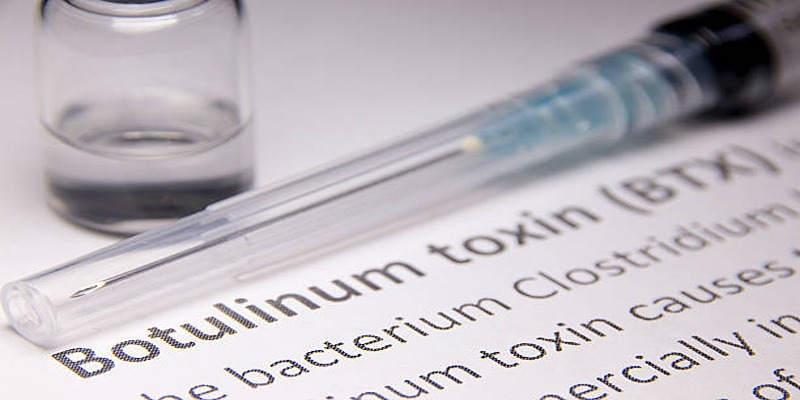Botulism is an uncommon but severe disease that affects your muscles and is produced by toxins from a bacteria called Clostridium botulinum. It was also found that these toxins impacted the nerves, causing muscle weakness and paralyzation if severe. Botulism comes in several types, including food-borne botulism, wound botulism and infant botulism, all of which have different modes by which they are administered into the body of an affected individual. Knowledge of signs like difficulty swallowing and breathing, muscle weakness, and dry mouth is essential for early diagnosis. Counselling is prevention and requires applicable food handling, preparation techniques, and knowledge of hazards. If botulism is suspected, early intervention is of immense importance because it helps the patient to recover.
What is Botulism?

Botulism is a very severe and sometimes lethal disease, which is produced by the bacteria Clostridium botulinum. This bacteria forms toxins which impacts on the nervous system and results in muscle weakness and paralysis. It unpacks on these toxins that are among the most lethal in the world therefore being a big threat to public health.
Types of Botulism
There are three main types of botulism: foodborne, wound, and infant. All are due to the different ways in which the bacteria and its toxins gets into the body.
Foodborne Botulism
Botulism foodborne is experienced when a person takes food that has been spoilt by bacteria or when he/she takes food that contains toxins produced by the bacteria. This can be products that are in cans that were not processed properly, freshly made pickles, sauerkraut or other homemade preserves or foods that have not been kept at the right temperature. Diarrhoea can develop 18-36 hours after consuming food containing the bacteria in questions or other foodborne pathogens.
Wound Botulism
Wound botulism is a situation in which the bacteria gain access to a wound and produces toxins. Because the bacteria can be found in contaminated solution. In some cases, symptoms can take as little as two and not more than six weeks from the time of exposure.
Infant Botulism
Infant botulism is caused by the ingestion of spores from the bacteria, which then grow and produce toxins in a baby's intestines. This type is most commonly seen in babies under 6 months old who have not yet developed a mature immune system. Symptoms may not appear for several days or even up to two weeks after exposure.
Other rare forms of Botulism
There are also other rare forms of botulism, such as adult intestinal toxemia and inhalation botulism, which can occur when spores from the bacteria are inhaled. These types are extremely uncommon and often only seen in certain occupational settings.
Causes of Botulism
Botulism is caused by the bacteria Clostridium botulinum, which can be found in soil and water. It produces toxins that attack the nervous system, leading to muscle weakness and paralysis. The bacteria can enter the body through various means, including ingestion of contaminated food or spores, open wounds, or illicit drug use.
Symptoms of Botulism
While symptoms may vary depending on the type of botulism and severity of the illness, there are some common signs to look out for. These include:
- Difficulty swallowing or speaking
- Muscle weakness, usually starting in the face and neck
- Dry mouth
- Blurred or double vision
- Drooping eyelids
- Breathing difficulty
If left untreated, botulism can progress to paralysis of the arms, legs, and respiratory muscles, potentially leading to death.
Diagnosis of Botulism
Diagnosing botulism can be challenging, as its symptoms can mimic other conditions.Physicians typically begin by reviewing the patient's medical history and recent activities, including dietary habits and potential exposure to contaminated food or wounds. Given the seriousness of the condition, if botulism is suspected, treatment may start even before confirmation. Laboratory tests are essential for a definitive diagnosis, often involving the detection of botulinum toxin in the patient's blood, stool, or gastric contents.
In some cases, a stool culture may be conducted to identify the presence of Clostridium botulinum bacteria. Electromyography (EMG) may also be used to examine muscle response to nerve stimulation, identifying patterns consistent with botulism. Prompt and accurate diagnosis is critical to administering the appropriate antitoxin treatment and supporting respiratory care if needed.
Treatment Options for Botulism

Treatment for botulism focuses on neutralizing the toxin and supporting the patient while they recover. Early medical intervention is crucial for the best outcome. The primary treatment includes the administration of antitoxin, which is used to block the activity of botulinum toxin circulating in the bloodstream. For infants with botulism, a different antitoxin known as botulism immune globulin is typically administered. In severe cases where breathing is compromised, a mechanical ventilator may be required to assist with respiration until muscle strength returns.
Supportive care, including nutritional and rehabilitation therapies, also plays a vital role in recovery, helping patients regain muscle function and manage long-term effects. Prompt and effective treatment can significantly reduce the risk of complications and improve the chances of a full recovery.
Prevention of Botulism
The best way to prevent botulism is by practicing proper food handling and preparation techniques. This includes:
- Properly cleaning and sanitizing all food preparation surfaces
- Cooking foods at appropriate temperatures to kill any bacteria present
- Storing foods properly, either in the refrigerator or freezer
- Avoiding consuming foods from bulging or damaged cans or containers
- Not giving honey to infants under 12 months old as it may contain botulism spores
Additionally, individuals should be aware of potential risks, such as using consuming homemade fermented or preserved foods, and handling soil without proper protection. Taking precautions can help reduce the risk of exposure to the bacteria and its toxins.
Conclusion
Botulism, though rare, is a serious and potentially life-threatening condition that necessitates immediate medical attention. Understanding the various types of botulism and how they occur helps in identifying the symptoms early, thereby facilitating prompt treatment. While primarily caused by Clostridium botulinum, preventive measures, particularly in food preservation and preparation, are crucial in reducing the risk of exposure. By staying informed about botulism and following recommended guidelines, individuals can better protect themselves and those around them from this severe health threat.







